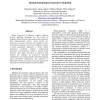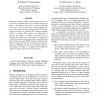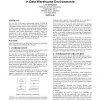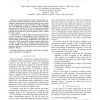ECBS
2004
IEEE
14 years 11 months ago
2004
IEEE
Model Integrated Computing employs domainspecific modeling languages for the design of Computer Based Systems and automatically generates their implementation. These system models...
CODES
2004
IEEE
14 years 11 months ago
2004
IEEE
High-level hardware modeling is an essential, yet time-consuming, part of system design. However, effective component-based reuse in hardware modeling languages can reduce model c...
LCTRTS
1998
Springer
14 years 11 months ago
1998
Springer
The embedded real-time software systems encountered in applications such as telecommunications, aerospace, and defense typically tend to be large and extremely complex. It is cruc...
ICECCS
1999
IEEE
14 years 11 months ago
1999
IEEE
Designing a software system's architecture properly is one of the most important tasks of any software engineering project. Nevertheless there exists no common definition of ...
DOLAP
1999
ACM
14 years 11 months ago
1999
ACM
We use the event-entity-relationship model (EVER) to illustrate the use of entity-based modeling languages for conceptual schema design in data warehouse environments. EVER is a g...
APN
2000
Springer
14 years 11 months ago
2000
Springer
Abstract. The Unified Modeling Language (UML) is the de facto industrial standard of an object-oriented modeling language. It consists of several sublanguages which are suited to ...
OOIS
2001
Springer
14 years 11 months ago
2001
Springer
Ontology is a comprehensive knowledge model which enables the developer to practice a “higher” level of reuse of knowledge. Typically, different modeling languages are employe...
EICS
2009
ACM
15 years 1 days ago
2009
ACM
MoLIC, a modeling language for designing interaction as a metaphor of conversation, was proposed to allow designers to build a blueprint of all interaction that may take place whe...
COMPSAC
2009
IEEE
15 years 2 days ago
2009
IEEE
Abstract—The pervasiveness of complex communication services and the need for end-users to play a greater role in developing communication services have resulted in the creation ...
WORDS
2002
IEEE
15 years 8 days ago
2002
IEEE
Rather recently object-oriented modeling languages, tools, and methods attract the interest of embedded (realtime) system developers. This is especially true if embedded (real-tim...




